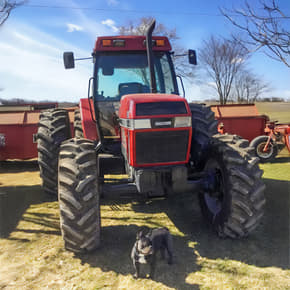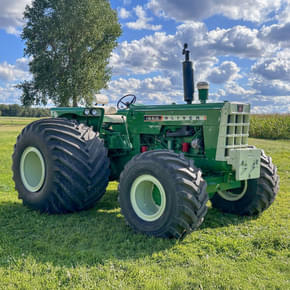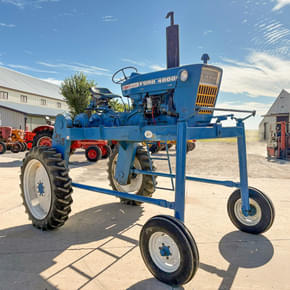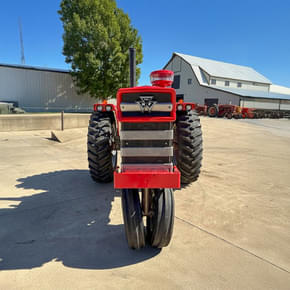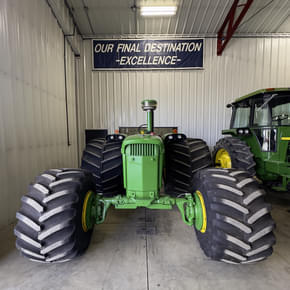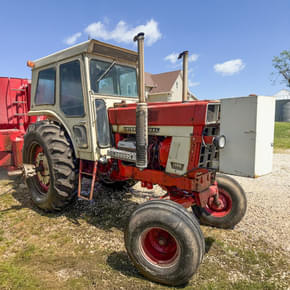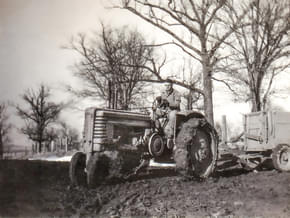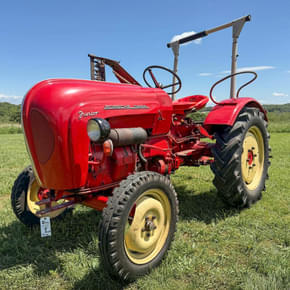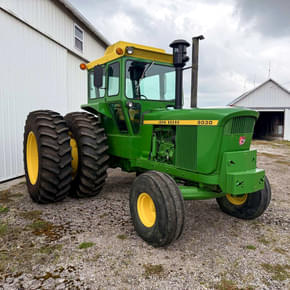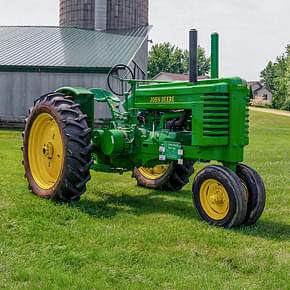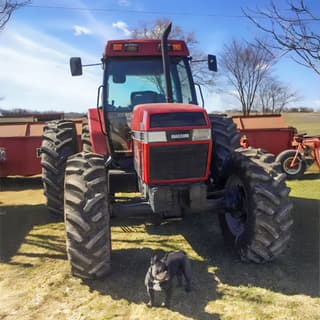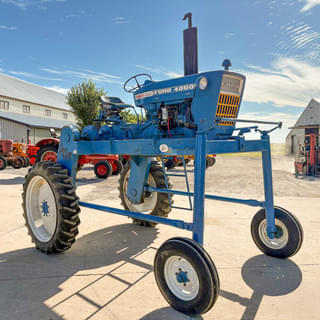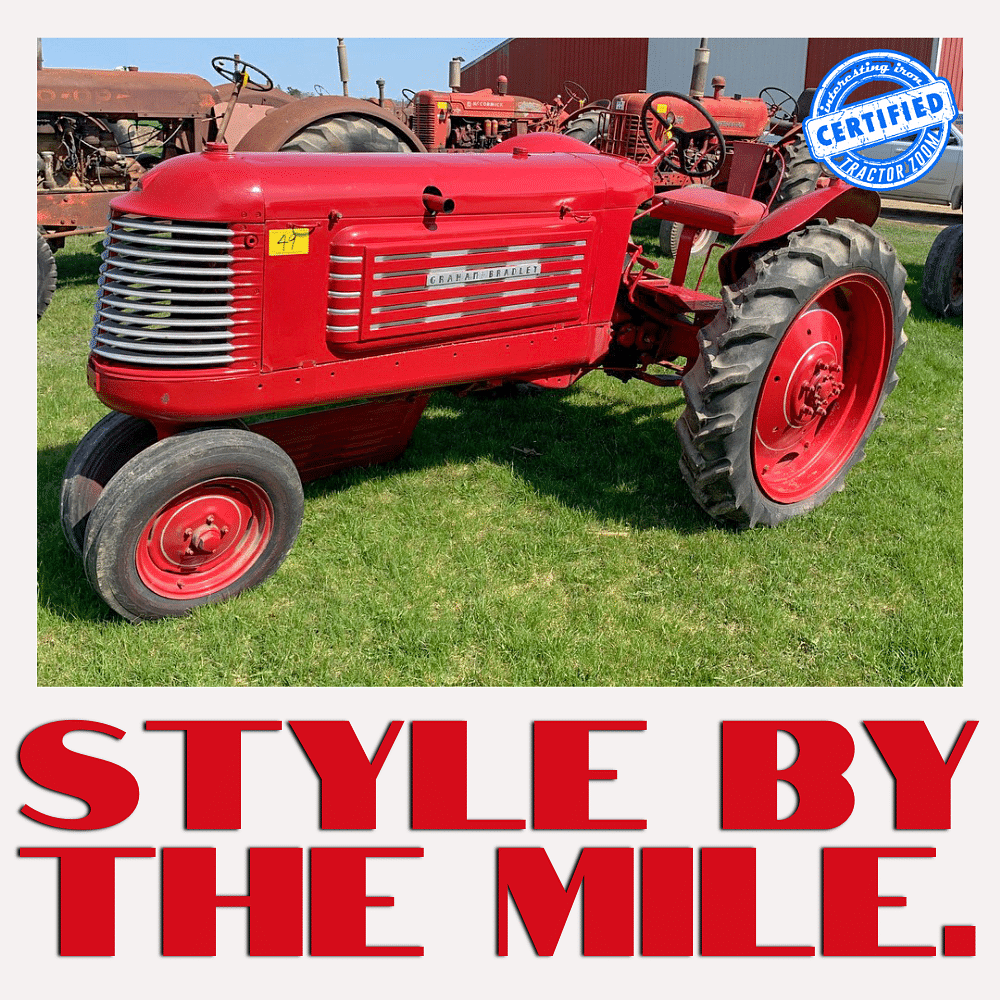
Today, we’re looking at an oddball, the Graham-Bradley 503.103…albeit one with a pretty interesting back story. Graham-Bradley tractors don’t come up on auction very frequently these days. If we’re lucky, we might see a half dozen this year. This is the second one that I’ve seen on a sale bill this year.
Details first, then we’ll dive in to the back story.
Graham-Bradley tractors listed on Tractor Zoom
Problem Solvers
The story of Graham-Bradley tractors starts around 1917 (ish) in the small town of Washington, IN. Ziba & Margaret Graham had a successful (and big, even by today’s standards) 1500-acre farm, and three sons – Joseph, Robert, and Ray. They were problem-solvers, and they saw lots of issues on the family’s farm – most of them centered around getting things from point A to point B.
It was about that time that cars were picking up steam, and Ray started tinkering with one to see if he could make it more useful as a farm vehicle. After some experimenting, he devised a way to add a flat bed to a Model T Ford. As it turned out, this became extremely successful, and by 1919, Graham Brothers was incorporated and began selling kits for the Model T and TT. Shortly thereafter, they expanded the business to begin actually building trucks out of multiple brands and engines. Eventually, they settled on Dodge, and by 1921 they had a deal in place so dealers could sell Graham Brothers trucks.
So yeah…they invented the pickup truck. You’re welcome.
While all of that was going on, though, they also played around with a farm tractor concept. It didn’t go anywhere (only a few were built for testing), but there’s at least one photo of a prototype at a tractor show in Evansville in 1919. The Graham brothers were pretty smart guys, and personally, I think they knew when and where to pick their battles. At the time, Ford and IH were in a tractor war for the ages, and if I had to guess, the Grahams knew that the timing was wrong. So, why waste the effort when there was a booming market for trucks?
Graham Brothers & Dodge
By 1925, Graham Brothers sold to Dodge for $3M in stock, and all three brothers took management positions. It was a good deal all the way around, honestly; Dodge built and sold the trucks under the Graham name (which was unchanged until Walter P. Chrysler bought Dodge for $170M in 1928), and the brothers Graham made out like bandits!
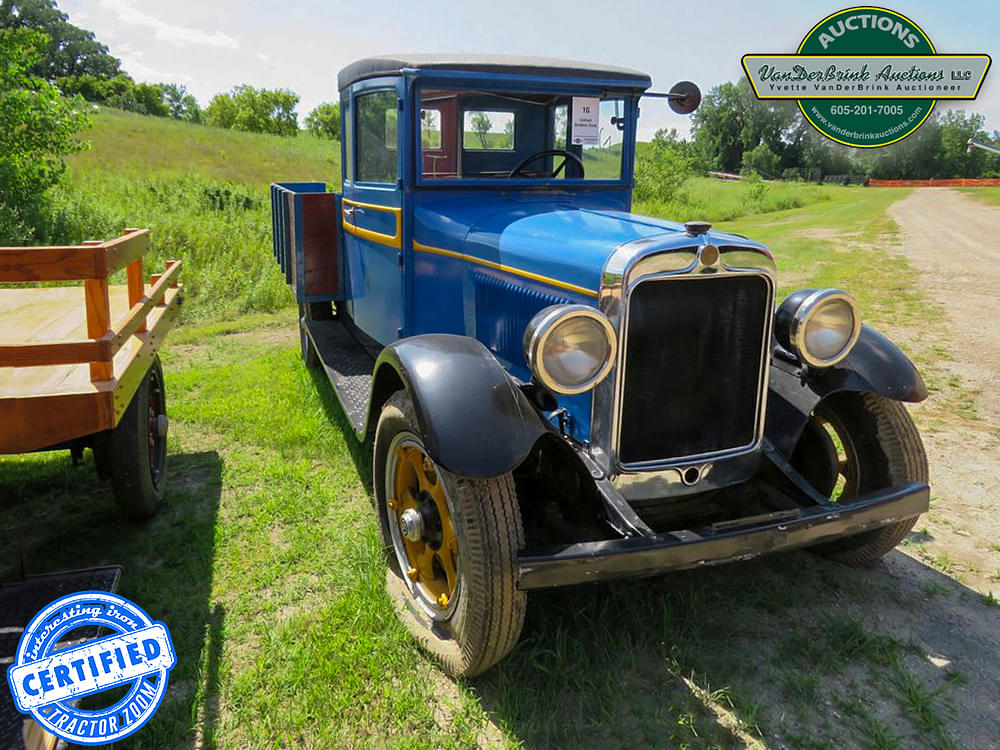
Graham-Paige Motor Corp., the first “Pope-mobile”, and the Blue Streak…
In 1927, the Grahams left Dodge and bought the Paige-Detroit Motor Company for $3.5M, and the Graham-Paige Motor Corp. was born. This time, the focus was passenger cars, although they tried selling a light truck line for a bit under the Paige name. It didn’t last for long, though; Dodge’s attorneys put a quick stop to it, enforcing a non-compete clause that they’d signed a few years prior.
(I know what some of you are thinking…”Hey Interesting Iron guy, this is all great stuff, but can we get back to tractors please?”)
We’ll get there. Give me a minute. Graham-Paige did some pretty cool stuff!
A car fit for The Pope…
Graham-Paige quickly became very highly regarded in the automotive world. Their designs were stylish, elegant, and forward-thinking. Furthermore, the cars themselves were very well-built! In 1929, they even built a car for The Pope! (See below.)

Model 57 – The Blue Streak
Furthermore, Graham literally changed the game in 1932 with the launch of the Model 57, which the press dubbed “The Blue Streak”. The Amos Northup-designed two-door coupe set a styling trend that continues to this day, and is one of the most important automotive designs…ever!

The Depression takes its toll, and the last-ditch effort – the tractors…
While Graham had great success – even during the early years of the Great Depression – eventually the weight of it all came crashing down in the mid-30s. Despite beautiful, high quality cars, sales slumped. (Which makes perfect sense, too – if nobody’s working, nobody’s buying cars, y’know?)
So, when it all fell apart, the Graham brothers went back to their Indiana roots for a last-ditch idea to help keep the company afloat.
Enter Graham-Bradley tractors.
The Spirit of Motion
Amos Northup, the same guy who designed the Blue Streak, penned most of the design for the tractors. The design followed what Graham called “The Spirit of Motion” – a direct crossover from their cars. The tractors were long and streamlined, and had a very classic automotive feel to them. They were swoopy where they could be swoopy, and designed for high style and operator comfort. Sadly, Northup passed away before the stylish design was finished, leaving Graham’s in-house team to finalize it.
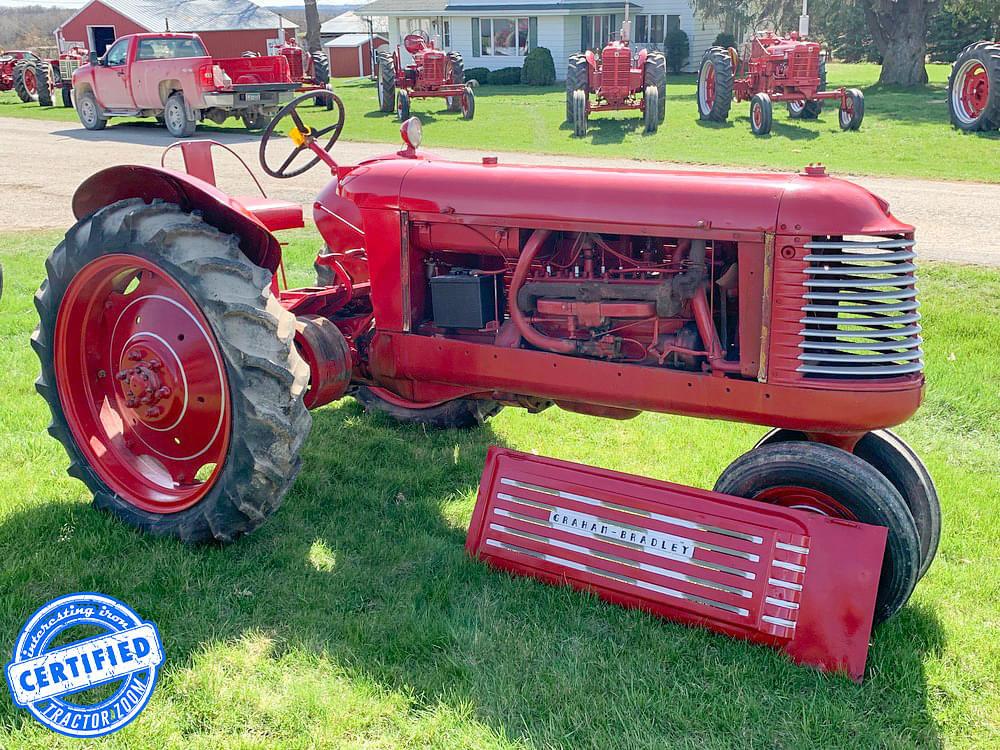
Mechanicals & Innovations
The tractors were very similar to a lot of the other lesser-known models of the day, using mainly off-the-shelf components readily available from other suppliers. However, Graham put their own spin on many of those pieces. For instance, the engine blocks were sourced from Continental, cast to Graham’s specifications and assembled entirely in-house. They were six cylinder designs, too, where most everybody else used a four-banger (and Deere with their two-cylinder). The four speed gearbox had a very fast road gear, allowing for nearly 22 mph on the road, which was pretty unheard-of at the time. It also featured a lockout, which allowed for use of all four gears to drive the belt, too. I suspect this was a handy feature if you were running an implement like a buzzsaw or something.
Graham-Bradley tractors also featured a couple of innovations carried over from the automotive side. Headlights made it a lot easier to use the tractor later in the evening. An upholstered seat made life a bit more comfortable, too. Lastly, I believe Graham-Bradley was the first to incorporate an electric start as standard equipment. Most all of the competition used a crank or a flywheel, making it a bit more of a process to fire up!
At the end of the day, these little row crop tractors (they also made a few standards) turned out about 25 horse on the drawbar, and about 30 on the belt – right in the middle between a Farmall H and an M, and similar to a John Deere G. Here’s a link to the Nebraska test file.
“Built by Graham, equipped by Bradley, guaranteed by Sears.”
Graham-Bradley tractors were unique in that they used a very non-traditional sales model. They chose not to spend the time cross training the auto dealers. It would’ve been spendy to do so, and furthermore, Graham didn’t have a big network of dealers like other auto-makers. So, they worked out a deal with Sears & Roebuck to sell them through the catalog and in stores. This wasn’t a new idea for Sears & Roebuck – they’d successfully sold a few different lines of tractors out of the catalog. They tied Bradley in to the project by having the company build a few implements for the tractors, figuring that by calling it a Graham-Bradley, there’d be better brand recognition. Bradley was fairly well-known in ag machinery at the time, so it worked out pretty well.
The marketing touted Graham-Bradley tractors as “the most beautiful tractor ever built” and a host of other catchy slogans. However, the one that probably got them the most traction was “Built by Graham, equipped by Bradley, guaranteed by Sears.” It was something that nobody else could say. Furthermore, since Sears had the public’s trust, that was a very good thing.
Sears started with a test run of 250 tractors in 1937, of which 243 were built. The public seemed to accept them and there weren’t any major issues, so production was ramped up in 1938. There were grand plans for the Graham-Bradley tractors – they intended to sell nearly 10,000 a year! Everything was very gung-ho…right up until it wasn’t.
Best-laid plans…
Sadly, the sales never stacked up to where Graham or Sears wanted them to. Graham-Bradley tractors were high-quality machines, but they also carried a fairly high price tag – nearly double that of some of their more established competitors. Furthermore, American farmers were just beginning to recover from the Great Depression; they weren’t spending money on luxury tractors from high-end automakers. They could spend less and get similar performance from one of the established brands like Deere, Farmall, or AC. (Coincidentally, this is also the reason that the Minneapolis Moline UDLX didn’t sell.)
Eventually, the partnership fizzled after a year or two. Graham had built just about 2300 tractors in total (there are serial records for 2243, give or take, but collectors seem to agree that a few more may have trickled out). In the end, Graham did end up doing some cross training and sold the last few Graham-Bradley tractors through their dealerships and small, independent farm equipment dealers.
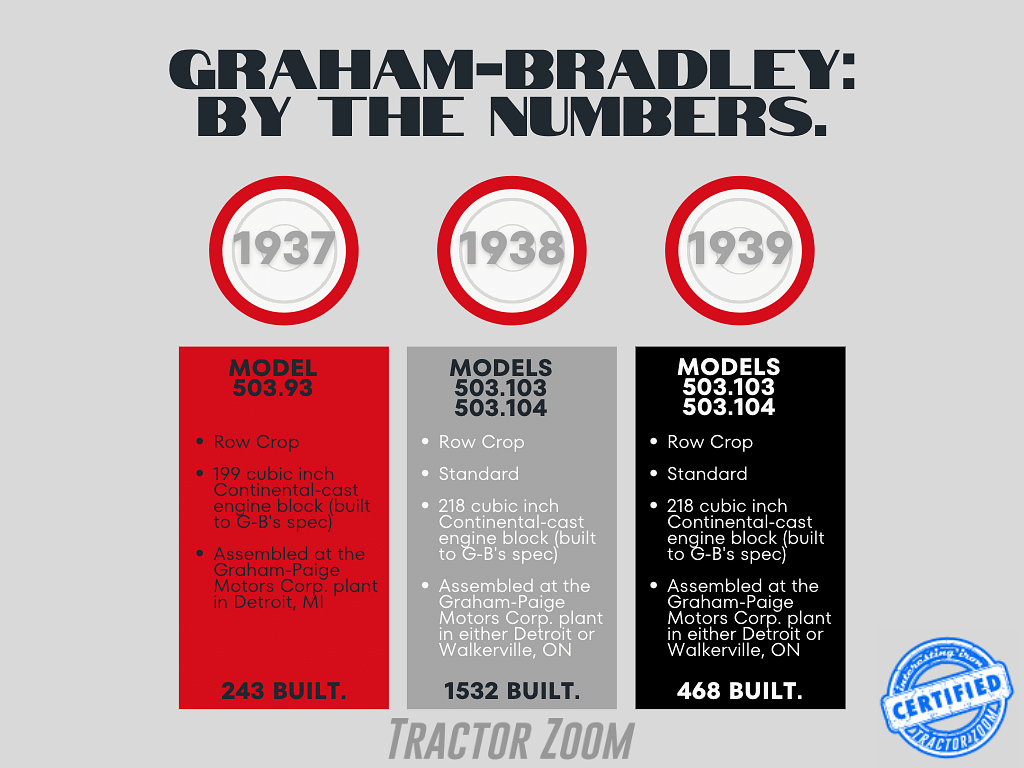
The one you can buy on June 7th!
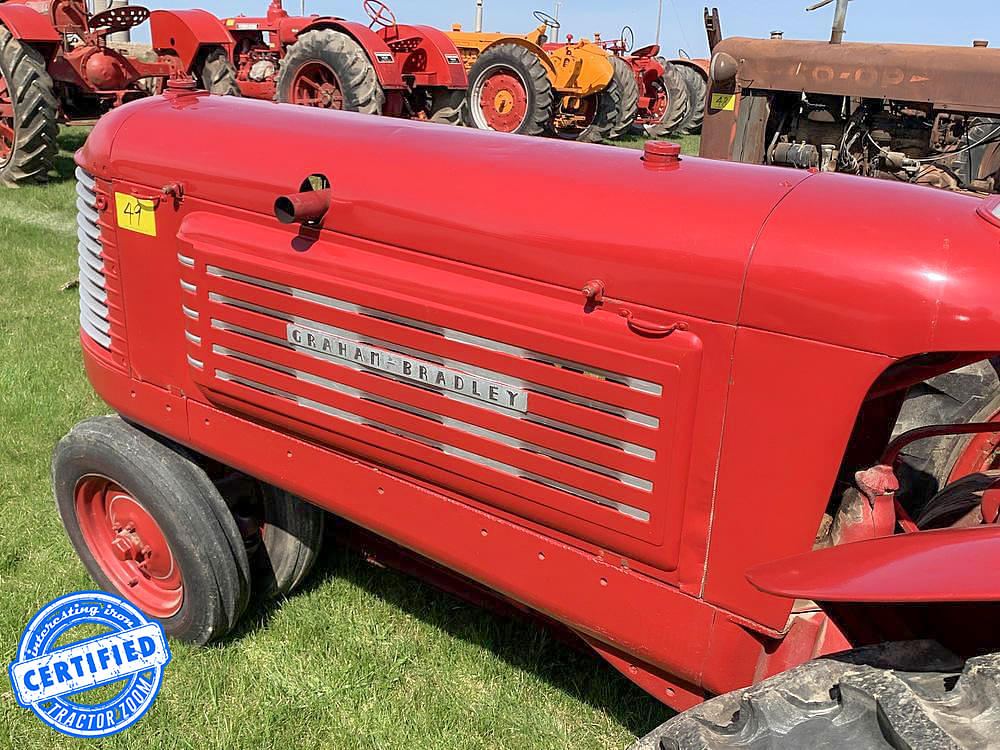
So here’s the thing about this particular auction; it’s almost all red, but not Graham-Bradley red. I wondered why myself, so I picked up the phone and called the man who owns it all – Dave Alstad.
For most of you, that name won’t ring any bells. But if you’re a red collector living in the upper midwest, it might. See, Dave Alstad was a charter member of the Minnesota chapter of the IH Collectors Club. The whole thing got kicked off on his farm, actually, way back in June or July of 1994. He was the Minnesota chapter’s first president, too! If ever there was a guy who bleeds IH #2150 red, it’s Dave. He was a hoot to talk to, and a really nice guy!
Dave’s been farming the same ground in SE Minnesota for 64 years this year, and he’s collected tractors since the early 70s. He’s 83 years old now, though, and he tells me that his doctors have told him to slow down a little. As far as timing is concerned, he figured that $8 corn seemed like a pretty good time to clear out the collection (and honestly, I can’t blame him)! So, with the exception of a Super M, an H, and a Cub, he’s sending it all down the road. I think there’s at least 50 tractors on the sale and over a dozen old pickups, too!
How’d the Graham-Bradley sneak in to a collection of Farmalls?
So how’d the oddball red one sneak in to the collection? Well, it turns out that it was all the neighbor’s fault – well, the neighbor and a fella named Joe Sheehan, if we’re splitting hairs.
See, when Dave was just a kid, the neighbors raised a small crop of oats, and every year they’d call on a custom harvester in the area to come and thresh it. That guy was Joe Sheehan, and for as long as Dave could remember, he always had a red Graham-Bradley. Dave told me, “Ryan, I was always so impressed with that tractor. We had red on the farm – we’ve always been red farmers – but none of our tractors ever ran quite as nice and smooth as that Graham-Bradley that Joe had. It sounded different, and I really liked it!”
And ever since, he’d always wanted one of his own.
The opportunity to get one came about when one showed up on a Gehling auction in the early 90s. “Boy, it sure didn’t look like much,” Dave said, “but I recognized it as a Graham-Bradley, and I just felt like I had to have it. I think I gave 137 bucks for it!” It was a basketcase, but it turned into a neat little project that Dave completed with his uncle over the next few years.
Like a lot of Graham-Bradleys, it was missing its side panels. They look really cool, but they’re awfully restrictive and tended to cause the motor to overheat. Lots of farmers took them off and tossed them in the corn crib and that was usually the end of it. However, after a few years of looking, he stumbled on to a set for $100 in Mankato, and those are the ones you see on it today.
What’s it worth?
Graham-Bradleys are tough to put a value on, honestly. Rare(ish)? Yep. Well-made? Indeed. Ahead of their time? Also true. But are they sought-after? Well…no. Not as much as a Farmall or a Deere of the same era. It’s not that they’re not collectible, it’s just a pretty specific niche that they fit into.
So what does mean as far as value?
Based on a quick check of our TZ Pro database and a conversation with James Fred, one of the most knowledgeable guys out there on G-Bs, we both sort of arrived at about the same conclusion. We’re both thinking it’ll take between $4-5K to get it bought.
With the exception of one that sold a couple of weeks ago for over $8700, the last few sold at auctions (non-Mecum) have been right around the $3600 mark. They were in similar condition to Dave’s tractor as well. However, Gehling Auction has done a nice job of promoting this auction on social media, and I know that people are talking about it. It’s already had a fair number of eyeballs on it, and Dave told me that he’s already fielded a few phone calls specifically asking questions about that tractor. This, coupled with inflation and $8 corn, leads both James and I to believe that it may go for a little more than previous sales.
Either way, though…I think Dave is going to make his money back. The tractor is fairly clean and mostly complete – it’s missing a headlight, and I’m pretty sure there’s a mild crinkle in the right side of the hood. There may be a couple of other things as well. Generally, it just needs a few things in order to be factory correct.
Wrapping up…
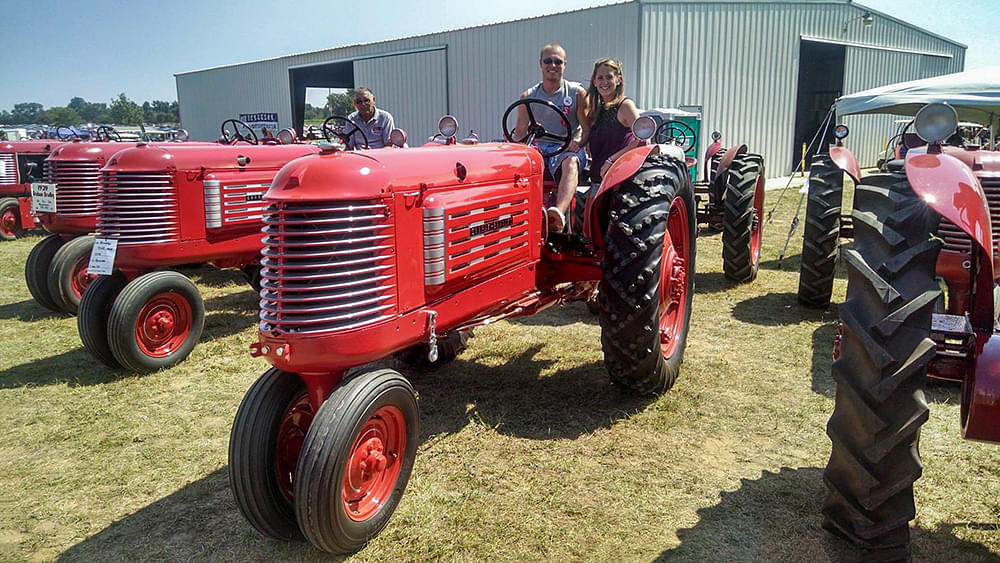
I had the opportunity to chat with James Fred yesterday afternoon, and learned a little about his story. Over the years, he’s become pretty well-known as an expert on the lesser-known tractors – especially those sold through the Sears & Roebuck catalogs. He’s done a great deal of research on Graham-Bradley, and has restored some of the most factory-correct tractors out there. He even met his wife Kourtney at a tractor show, and it turns out that they’re both nuts about these tractors! Over the years, he’s helped dozens of collectors find parts (and in some cases, get new/reproduction parts), and he’s also on the leadership team for the Graham-Bradley & Sears-sold tractors, too. He’s a busy guy, but when you’re passionate about something, you tend to throw everything you’ve got at it!
So, if you do need parts, or you have a question about a Graham-Bradley, he’s a pretty darn good guy to talk to. Email him here.
At the end of the day, Graham-Bradley tractors are beautiful, high quality tractors that get overshadowed by red, green, orange, and yellow paint. However, for the people who love them, they’re absolutely ate-up with ’em! It’s rare to find a G-B collector who just has one.
Link to the Graham-Bradley 503.103

